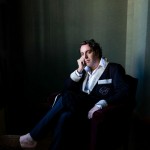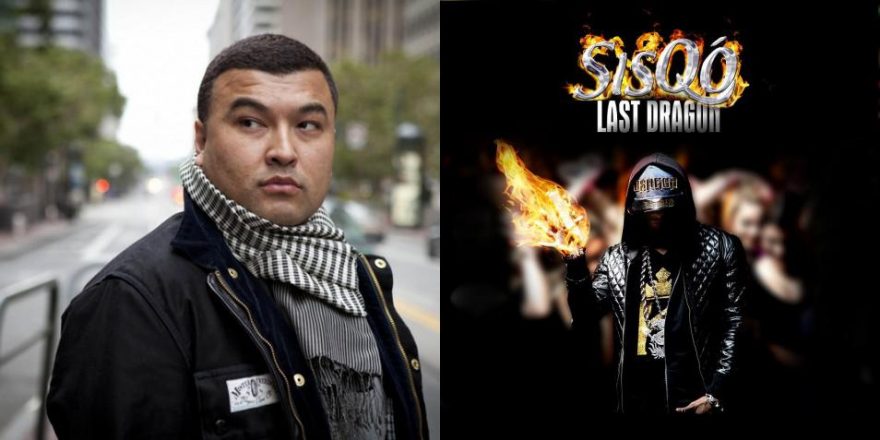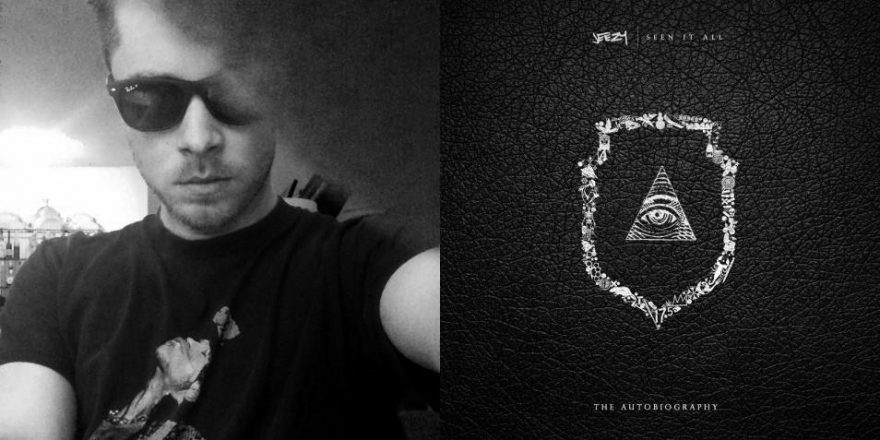I could never get a handle on Big Sean’s rap character. Rappers are like pro wrestlers: they need to telegraph whether they’re a “heel” or a “face.” Is Big Sean a “lyricist” or a “swag rapper” or a “pimp”? I already knew of his status as the probable inventor and perfecter of “hashtag rap” (in which the “like” or “as” of similes are dropped, e.g., “It’s going down/Basement”). That’s a huge accomplishment, but nonetheless he always struck me as a less charismatic Fabolous, another obviously talented artist whom I also couldn’t figure out.
Clicking on Dark Sky Paradise, I was already intrigued by the word “dark” in the title. (Compare this with his last two boilerplate rap album titles, 2011’s Finally Famous and 2013’s Hall of Fame.) Sean’s mentor and label boss Kanye Kardashian’s best album is arguably My Beautiful Dark Twisted Fantasy, so here we have paradise instead of fantasy. Maybe I was finally going to learn about what made this guy tick.
The beats
We are clearly in the post-Kanye, post-Drake beat aesthetic: album opener “Dark Sky (Skyscraper)” starts with a THX-worthy thunderclap sound effect, and a beatless 90 seconds of dense, syncopated rapping. The backdrop is all cold-filtered minor chords and dramatic tubular bells. On the bonus track “Platinum and Wood” there is an actual tempo change, up a few dozen BPM for the second verse. That’s a rarity. I really appreciate that the biggest rappers are now engaging in an arms race of musical open-mindedness. It’s the reason I ended up playing piano on a Drake album. Listening to Dark Sky Paradise, I hear bits of electronica, lo-fi, indie rock and hardly any sappy r&b or, God forbid, rock-rap. Impeccable taste.
Now that rappers are interested in making “dark” and emotional albums, they’ve fallen in love with endlessly held chords, usually icy, ’80s-tinged synthesizer pads. It creates a pleasantly claustrophobic feel. On “Deep,” the handclaps are almost an afterthought — Big Sean and Lil’ Wayne find the pitch and the musical space for their raps inside the chords rather than the percussion. Luckily, there are so many sections without drums, so these ubiquitous pads don’t smother the ear too badly. The beatless trend in hip-hop continues, and it works to Big Sean’s advantage here (“One Man Change the World” literally has no beat at all, ditto for the recent Kanye-McCartney singles).
This depth is welcome to my ears, but it owes so much to Kanye and Drake that it’s hard to trust. The drum patterns follow the recent trend favoring quick, stuttering alternations of triplets with fast sixteenth notes. Half-time switches to double-time just like that. It’s rhythmically quite challenging. So between the schizophrenic hi-hats and the ever-changing musical moods, there’s no way to get bored, but maybe all of that serves to distract from the more existential question: what is Big Sean’s own aesthetic?
The raps
The dosage of boasting vs. introspection, catchiness vs. lyricism, punchlines vs. storytelling is eerily perfect. He changes flows and subject matter at precisely the moment you wish he would. He never gets annoying, which is the hugest compliment of all.
He’s flexible. On most songs, he modulates his voice: up an octave here, down a fifth there, then back down to his relaxed drawl to bring in a half-sung hook. Two minutes go by on this album and you’re likely to have heard three or four different flows in multiple variations.
Some rappers like to give the impression of virtually freestyling. I would put Jay-Z, the Game and Rick Ross in this category: the kind of rappers who claim not to write down their rhymes. They tend to favor a single flow for entire verses, finding a sweet spot and sticking with it. Big Sean hints at an architectural intention that I first noticed with more dexterous, compositional rappers like Busta Rhymes and Eminem. I’m quite positive that Sean writes his rhymes down, possibly using different colored pens for different sections. He’s mastered and internalized so many of rap’s latest tropes: machine gun flows, TI-style shit-talking, rapping in triplets à la Migos (my personal favorite “Paradise,” in which he gives the word “moneybag” the “Versace” treatment). He even does a decent Drake chorus croon (on “I Know,” I had to check if it was Drizzy himself).
And like all rappers, he often mentions sex, cars, weed, clothes and money — but he never seems that excited about any of them. He only seems to engage emotionally when trying to motivate himself to keep working. Maybe he’s rapping in the mirror? Rapping may be self-help for Big Sean. Somehow his swag sounds half-hearted, even though it is expertly delivered.
Maybe Big Sean is a music nerd who finds himself in this highly competitive arena where his natural introversion is at odds with the rap NBA. That could be why he projects but also hides behind his “versatile virtuoso” role. Maybe the character of Sean that I was imagining — a kind of loner who ended up doing it big on the highest level in a world of psychopathic extroverts, a kind of rap Barack Obama — doesn’t actually exist. Now if he could only make me really care about him — to be a beloved artist means showing some element of vulnerability. But Big Sean just can’t seem to endear himself to me that way. I am in awe of his abilities and applaud his determination to keep up with the cutting edge of prime-time rap — but I still can’t get a handle on his character. For now, he remains an unknowable, tragic figure.








